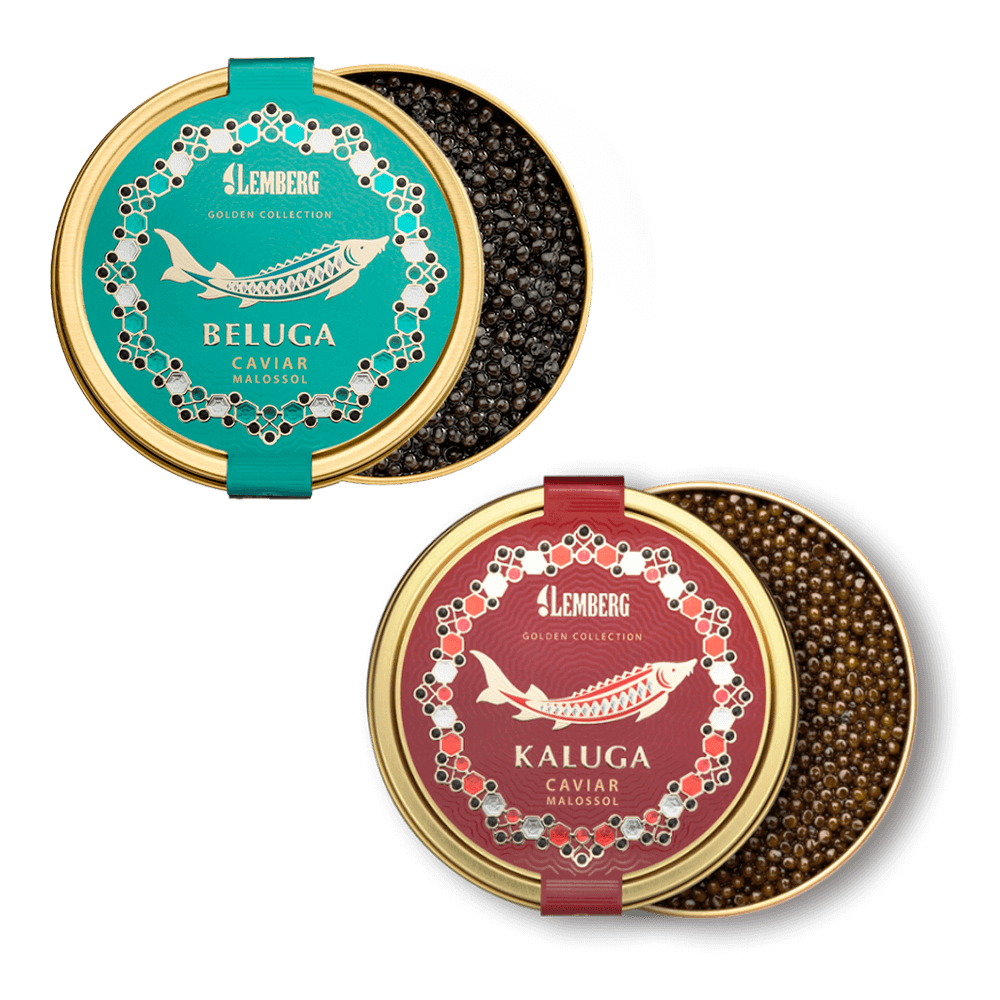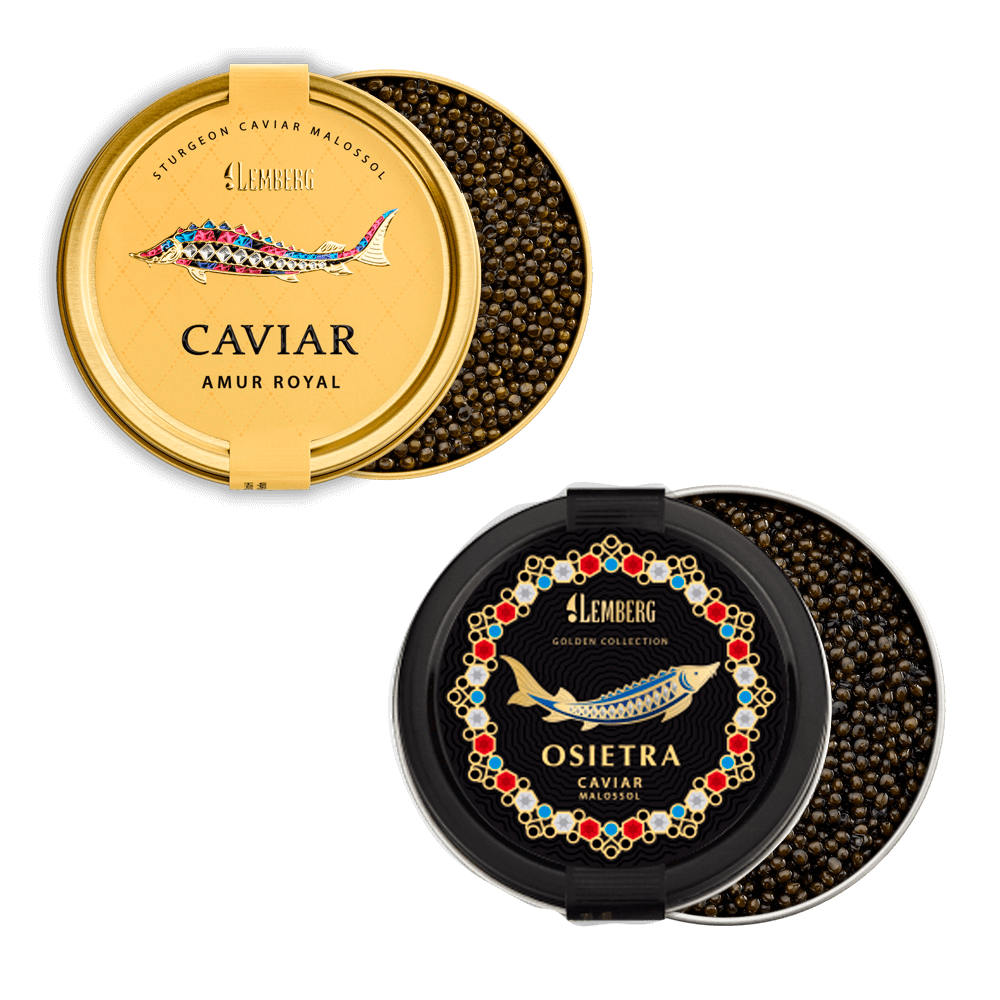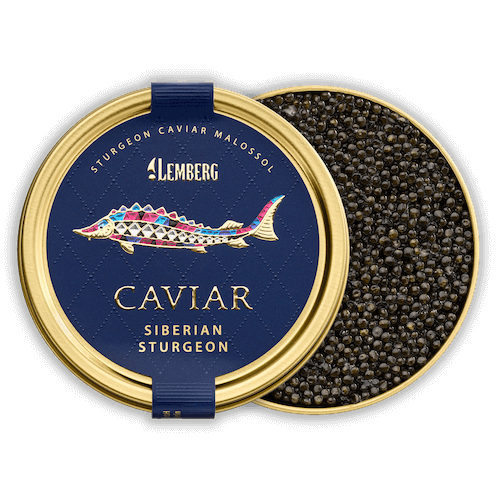Black caviar: what is it?
- What is caviar?
- The most delicious caviar: from which fish?
- Caviar types
- Beluga
- Kaluga
- Amur Royal
- Osietra
- Siberian Sturgeon
- Caviar: useful properties
What is caviar?
Caviar is really nothing but roe, i.e., the eggs of some species of fish. The vast majority of the raw material currently available on the market comes from planned breeding. The animal receives hormones that stimulate ovulation, and then the produced eggs are removed at the right moment through an incision in the urogenital muscle (there are also other options)
It is worth paying attention to the fact that the procedure does not involve killing the fish. After the spawning process is completed, the fish is released. Let’s take a more detailed look at caviar types.
The most delicious caviar: from which fish?
Black caviar is the commonly used name for sturgeon caviar. Black caviar is famous for its special taste and rich set of natural nutrients for the body. This product has been a delicacy for many years, and its price is high limits. But all this is fully justified since sturgeon fishing is prohibited, and the cultivation of fish in specialized farms requires a lot of technical effort and takes a lot of time.
On the shelves of specialized fish stores, you can find the most popular types of black caviar: beluga, osietra, Siberian, Kaluga, and Amur Royal.
Caviar types
Let’s now take a more detailed look at the most popular black caviar types.
Beluga (Huso Huso)
Let’s start with Beluga caviar. This caviar is the most expensive caviar in the world. The grain size here is really big, reaching 3.5mm. Speaking about color, it may differ: grains may be light gray or anthracite. The skin is really thin and delicate, which allows for experiencing an outburst of taste easily. Many gourmets are convinced this product is the best worldwide. Beluga caviar is often called black gold.
Kaluga (Huso dauricus)
Kaluga is considered the largest freshwater sturgeon. The color of the pearls is truly incredible: mainly, these are glossy grey-black pearls, but one can also find flecks of olive green and dark brown. The size is about 3mm.


Amur Royal (Huso dauricus+Acipenser schrenckii)
Amur caviar is a top product with an incredibly fine, creamy taste and wonderful grains: clearly defined, clean and uniform in color. This is the result of crossing Kaluga (lat. Huso dauricus) with Amur sturgeon (lat. Acipenser schrenckii). This unique product is an attractively priced alternative to the rare beluga caviar. A feast for the eyes and an absolute dream on the palate! The creamy taste is absolutely pure and lasts a long time on the palate. The grain size is 2.9-3.3mm; the color is usually light brown.
Osietra (Acipenser gueldenstaedtii)
Osietra caviar consists of 2 mm small pearls that are a little firmer in consistency. They are a little easier to process and are not quite as sensitive as other types of caviar. The color of the Ossietra caviar varies quite a lot. The grain can be silver-gray to black, and a golden shimmer is quite desirable and a quality feature. In terms of taste, it convinces with intensity and a nutty note. Its habitat extends from the Black and Azov Seas over the tributaries of the Don and the Danube. Like most types of sturgeon, the Osietra sturgeon is an endangered species. Therefore, the majority of Ossietra caviar today comes from aquaculture to protect and preserve the wild stocks.
Siberian Sturgeon (Acipencer baerii)
This incredible caviar is the standard of taste, aroma, and appearance. The eggs are tender and medium in size (1.5–2.0 mm). The color of the eggs is gray or bronze, sometimes black. But the taste is magnificent and delicate, with hints of nutty and creamy aftertaste. It is a relative of the Russian sturgeon, but unlike its “brother,” it spends its life in rivers and lakes. There are specimens in Siberia, in the rivers Ob, Yenisei, Kolyma, and Lena.
Caviar: useful properties
Caviar is, without a doubt, a wealth of various natural nutrients. It provides the body with many valuable natural micro- and macro elements. What exactly does the roe contain? Here are its natural gifts:


 English
English